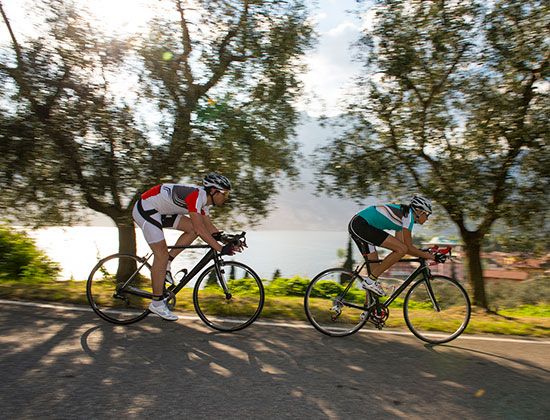On yer bike: The health benefits and injury risks of cycling
Some people might consider cycling as a relatively high-risk sport. Yet, according to statistics, even using a rowing machine can be riskier than outdoor cycling. We take a look at the health benefits of cycling versus the potential injury risks.
The benefits of cycling
It’s not just a question of beating the rush hour by getting around on two wheels – although ‘gridlock research’ commissioned by Citroen in 2006 found that a cyclist can average 12-15mph cycling in London’s morning traffic, twice as fast as a car at that time – there are many reasons why you should go bike. Cycling affects the body in many positive ways, from helping you to lose weight, boosting collagen production, improving bowel performance, strengthening your heart, increasing brain power and keeping illness at bay.
Cycling can also ensure a good night’s sleep. Researchers at Stanford University School of Medicine asked insomnia sufferers to cycle for 20-30 minutes every other day and found that the time it took to fall asleep was reduced by half and sleeping time was increased.
Although cycling is a non-impact sport with great cardiovascular benefits, it is not without hazards. Studies have been launched in the past to explore cycle-related injuries in London. However, crashes are far less common than is popularly thought and cycling-related injuries are more likely to be the result of overuse or problems with posture. As Mr Adil Ajuied, Consultant Knee Surgeon at the Fortius Clinic, explains, although our ligaments, cartilages, tendons and muscles are robust, they do not respond well to “unprecedented excessive physical exertion”.
His advice is as follows: “It is important to work towards performance goals in a steady and progressive fashion. This gives our tissues an opportunity to strengthen, remodel and adapt to the demands we will be placing upon then. We can get away with a lot of bad technique, inadequate training, poor tissue strength and conditioning, before we develop problems.
The things that take us over the edge, and see us develop injuries, are: when we age but we expect the same performance as our younger selves; when we get tired and fatigued during an event and our technique suffers, or when we over train, asking too much too soon from our joints.” He concludes: “The very old and sometimes over-used adage, prevention is better than cure, applies to cycle training.
Here are some common cycle-related injuries and tips on how to prevent them:
Achilles Tendonitis
This is an overuse injury and is caused by inflammation of the Achilles tendon. It can be exacerbated by poor bike set up, particularly with the positioning of shoe cleats. Most road cyclists will ‘clip in’ to their pedals and, if set up incorrectly, this can cause stress on the ankle and knee. If you do experience pain in the ankle, back of calf or knee, then slow down on your training and ice the affected area, while at the same time check your bike set up.
Patellar Tendonitis
The patellar tendon is located just below the kneecap and it can become inflamed through overuse but can also result from having your bike seat positioned too low. Muscular strength can also be a factor; if the quadriceps muscles become overworked it can lead to tendonitis of the patellar tendon. Breaking up pedal speed, raising your seat and incorporating the quadriceps, gluteal muscles and hamstrings when cycling can all help prevent inflammation of the patellar tendon developing.
Ulnar Nerve Compression
Holding the handlebars in the same position for long periods of time can result in compression of the ulnar nerve. The ulnar nerve is the largest unprotected nerve in the body, running from the little finger all the way into the upper arm. Your bike is designed to have multiple positions for you to hold the handlebars while cycling, so prevent problems by regularly switching the position of your hands during long rides.
Lower Back Pain
This is a common complaint for cyclists and, if left untreated, it can lead to more serious conditions such as sciatica and nerve entrapment. If you are troubled with lower back pain, concentrate on your core and you’ll be able to maintain riding position for longer periods of time.
Last but not least
Although crashes are not as common as other type of cycling-related injuries, that doesn’t mean it’s a risk you should ignore, so always wear a helmet!


